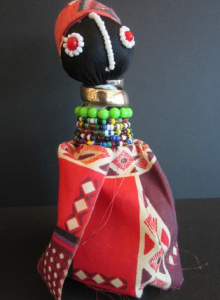
A talking bull? In a way, yes. As reported in the Wall Street Journal, a British public art society sponsors the process of adding voice-recorded interpretations to 27 statues throughout Chicago. Writers and artists are recording two-minute monologues offering their takes on the statues.
To access the audio files, one needs to scan the QR code beside each statue (see the image to the right). So how does this connect to authentic learning for our students? I am reminded of a Grade 5 unit on the American Civil War at one of my international schools. The unit common assessment had the students apply their research to design and construct a monument around an idea to communicate the effect of an event or action.
We worked with the students to stretch themselves into more abstract thinking to not just create monuments on topics or people (e.g., Robert E. Lee’s horse). The teachers guided the students to the enduring understanding of the unit with the research and monument development offering students choice and no ceiling on creative thinking.
Returning to Chicago and my belief that we can do much more with our field trips, there are many directions we can go to empower students as researchers, reporters, documentation experts, etc., regarding field trips and museum visits. I have written several posts about this topic that you should check out.
What jumps out at me here is the personal angle provided by the artists and writers in Chicago. We can plan field trips to have students research monuments and museum exhibits to provide factual audio recordings. This is fine. But we can move further up Bloom’s Taxonomy to have students process the facts and respond to carefully crafted questions to elicit more conceptual thinking and personal responses.
Teachers can develop a blended approach to this process by building out a website or sharing a Google Document listing monuments or exhibits for students to review online with provided links to follow to learn more. Students then could choose a monument or exhibit to research. Upon completion of their work outside of class, class time could then be set aside to prompt and guide students to think personally about their monument/exhibit to respond to questions to move into more abstract thinking.
One could then go in several directions. Students could write up a script and audio record their insights. The sound files could be uploaded to the teacher’s Website/Goo Doc so that when the field trip occurs, the students could use their mobile devices to listen to their classmates as they view each monument/exhibit. Another direction is to have students design their interpretation of what they think the monument/exhibit should look, sound, and feel like. Who knows? This is one where the students engaging their imaginations could lead to creative expressions of understanding.
